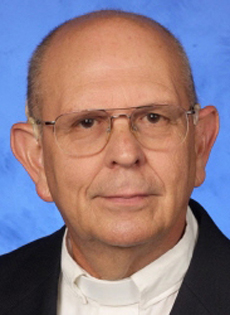
How many saints are there?
Monday, November 4, 2013
*Fr. Eduardo Barrios, SJ
What the Church teaches about saints, souls and purgatory
Excerpts from the Catechism:
828 By canonizing some of the faithful, i.e., by solemnly proclaiming that they practiced heroic virtue and lived in fidelity to God’s grace, the Church recognizes the power of the Spirit of holiness within her and sustains the hope of believers by proposing the saints to them as models and intercessors…
956 The intercession of the saints. “Being more closely united to Christ, those who dwell in heaven fix the whole Church more firmly in holiness.... [T]hey do not cease to intercede with the Father for us.... So by their fraternal concern is our weakness greatly helped.”
962 “We believe in the communion of all the faithful of Christ, those who are pilgrims on earth, the dead who are being purified, and the blessed in heaven, all together forming one Church; and we believe that in this communion, the merciful love of God and his saints is always [attentive] to our prayers” (Paul VI, Credo of the People of God § 30).
1030 All who die in God’s grace and friendship, but still imperfectly purified, are indeed assured of their eternal salvation; but after death they undergo purification, so as to achieve the holiness necessary to enter the joy of heaven.
1032 …From the beginning the Church has honored the memory of the dead and offered prayers in suffrage for them, above all the Eucharistic sacrifice, so that, thus purified, they may attain the beatific vision of God. The Church also commends almsgiving, indulgences, and works of penance undertaken on behalf of the dead...
Excerpts from the Catechism:
828 By canonizing some of the faithful, i.e., by solemnly proclaiming that they practiced heroic virtue and lived in fidelity to God’s grace, the Church recognizes the power of the Spirit of holiness within her and sustains the hope of believers by proposing the saints to them as models and intercessors…
956 The intercession of the saints. “Being more closely united to Christ, those who dwell in heaven fix the whole Church more firmly in holiness.... [T]hey do not cease to intercede with the Father for us.... So by their fraternal concern is our weakness greatly helped.”
962 “We believe in the communion of all the faithful of Christ, those who are pilgrims on earth, the dead who are being purified, and the blessed in heaven, all together forming one Church; and we believe that in this communion, the merciful love of God and his saints is always [attentive] to our prayers” (Paul VI, Credo of the People of God § 30).
1030 All who die in God’s grace and friendship, but still imperfectly purified, are indeed assured of their eternal salvation; but after death they undergo purification, so as to achieve the holiness necessary to enter the joy of heaven.
1032 …From the beginning the Church has honored the memory of the dead and offered prayers in suffrage for them, above all the Eucharistic sacrifice, so that, thus purified, they may attain the beatific vision of God. The Church also commends almsgiving, indulgences, and works of penance undertaken on behalf of the dead...
How many saints are there?
The question comes up at the beginning of November with the solemnity of All Saints.
At first you might look for the answer by adding up the information in good martyrologies or saints’ calendars. But in practice it is not so easy, as there are groups of saints some of whose names are mentioned while the rest are simply referred to as “fellow martyrs.”
For many centuries, outstanding Christians reached the honor of sainthood by popular acclaim. The popes confirmed the feelings of the people.
Only in the 17th century did a rigorous process begin for beatification and canonization. The first to be canonized, after careful historical research, were St. Teresa of Avila and Saints Philip Neri, Ignatius of Loyola, Francis Xavier and Isidro the Worker. They were declared saints by Pope Gregory XV in 1622.
As for a number, the liturgy of All Saints Day could help. The first reading, Revelation 7:2-4, 9-14, says there are "one hundred and forty-four thousand." But one need not be a specialist in Scripture to know that it is not an actual figure but a symbolic one, formed from ingenious arithmetic based on the number 12 — the number of tribes of Israel and the number of the first apostles. Removing any doubt, though, the reading also mentions "a great multitude which no one could count."
So the saints are many, as not all have passed through the official process and so have remained anonymous. The Church does justice to all of them by honoring them November 1. It is a day of comfort and hope. Criminals of every ilk always make noise. But as the good make no noise, many men and women who spent their lives doing good for love of God and neighbor have been forgotten. But not by the Church.
The question comes up at the beginning of November with the solemnity of All Saints.
At first you might look for the answer by adding up the information in good martyrologies or saints’ calendars. But in practice it is not so easy, as there are groups of saints some of whose names are mentioned while the rest are simply referred to as “fellow martyrs.”
For many centuries, outstanding Christians reached the honor of sainthood by popular acclaim. The popes confirmed the feelings of the people.
Only in the 17th century did a rigorous process begin for beatification and canonization. The first to be canonized, after careful historical research, were St. Teresa of Avila and Saints Philip Neri, Ignatius of Loyola, Francis Xavier and Isidro the Worker. They were declared saints by Pope Gregory XV in 1622.
As for a number, the liturgy of All Saints Day could help. The first reading, Revelation 7:2-4, 9-14, says there are "one hundred and forty-four thousand." But one need not be a specialist in Scripture to know that it is not an actual figure but a symbolic one, formed from ingenious arithmetic based on the number 12 — the number of tribes of Israel and the number of the first apostles. Removing any doubt, though, the reading also mentions "a great multitude which no one could count."
So the saints are many, as not all have passed through the official process and so have remained anonymous. The Church does justice to all of them by honoring them November 1. It is a day of comfort and hope. Criminals of every ilk always make noise. But as the good make no noise, many men and women who spent their lives doing good for love of God and neighbor have been forgotten. But not by the Church.


Comments from readers